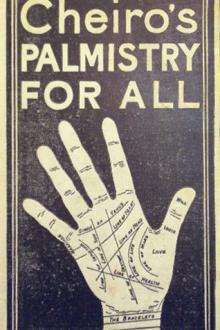The Diary - Samuel Pepys (red white and royal blue hardcover txt) 📗

- Author: Samuel Pepys
Book online «The Diary - Samuel Pepys (red white and royal blue hardcover txt) 📗». Author Samuel Pepys
Newport Pagnell, a town in Buckinghamshire, which takes its second name from the family of Paganel, who formerly owned the manor. The church is a handsome building, with nave, aisles, and chancel, and with pinnacled tower. ↩
This must have been either Inigo Jones’s The Most Notable Antiquity of Great Britain Vulgarly Called Stonehenge, printed in 1655, or Chorea Gigantum, or the most famous Antiquity of Great Britain, vulgarly called Stones Heng, standing on Salisbury Plain, restor’d to the Danes, by Walter Charleton, M.D., and published in 1663. ↩
Henry Chichele, Archbishop of Canterbury, the founder of All Souls’ College, born 1363, died 1443. ↩
John Middleton, the remarkable person here alluded to, known by the name of “The Child of Hale,” was born in 1578, and buried in the churchyard of Hale, in Lancashire, in 1623, where his gravestone is still to be seen. About the year 1617 Sir Gilbert Ireland took him up to the court of James I, when he threw the king’s wrestler, and put out his thumb, by which feat he disobliged the courtiers, and was sent back, with a present of £20 from the sovereign. He returned home by Brazenose College, then full of Lancashire students, and his picture was taken, and is still preserved there. Likenesses of this English giant are also extant at High Legh, at Knowsley, and at Mr. Ireland Blackburne’s seat, at Hale. “Middleton’s hand,” observes Plot (History of Staffordshire, p. 295), “measured, from the carpus to the end of his middle finger, seventeen inches, his palm was eight inches and a half broad, and his whole height nine feet three inches, wanting but six inches of the height of Goliath, if the portrait of him in Brazenose Library, drawn at length, as it is said, in his just proportion, be a true piece of him.” These dimensions appear to have been compared with the portrait at Hale, with which they exactly accorded, as did the shape of the giant’s hand cut upon a stone in the college cellar, with the date affixed, to which Pepys alludes. The blank in the Diary, after the word Hales, was obviously left for the dimensions of the hand. —B. Mr. Falconer Madan, Assistant Librarian of the Bodleian, has kindly given the editor the following particulars, which supplement Lord Braybrooke’s note. Middleton was treated at Brasenose College because it drew largely from Lancashire and Cheshire. The portrait referred to above is now in the Buttery. There is also in the Buttery a picture of the hand of the man full size, and till the last ten years there was an outline of a hand on a gilt background on the eastern one of the two doorposts of the cellar door under the hall on the south side of the latter, at the foot of a flight of stone steps. ↩
Christ’s Hospital. ↩
A MS. History of Abingdon, collected by Francis Little, one of the principal burgesses, in the year 1627, now in the possession of the corporation. —B. ↩
Thomas Foley, of Witley Court, who himself founded a hospital for sixty boys at Stourbridge, in Worcestershire. See October 27th, 1664. He probably wished for precedents as to the mode of settlement. —B. ↩
See Ashmole’s Antiquities of Berkshire, vol. i, 1719, p. 134. The following is the rebus noticed by Pepys:
“V.A.B.I.N.D.O.N.R.F.I. Take the first letter of youre foure fader, with A., the worker of Wer, and I. and N. the colore of an asse; set them togeder, and tel me yf you can, what it is than. Richard Fannande, Irenmonger, hathe made this Tabul, and here in the yere of King Herry the Sexte, XXVIte.”
↩
Probably a mistake for East or Market Lavington, which lies in the same direction. —B. ↩
Pepys must mean that the earthworks, more than a hundred feet in height, were prodigious and alarming, the space contained within them being only twenty-seven acres. There is undoubtedly something sublime in standing within the area, in the complete solitude and magnificence of the ramparts. —B. ↩
It was much to the credit of Pepys’s taste that in an age when Gothic architecture was little admired he could see the beauties of this matchless building. ↩
Seth Ward, born 1617; F.R.S.; Savilian Professor and President of Trinity College, Oxford; Dean of Exeter, 1661; Bishop of Exeter, 1662; translated to Salisbury, 1667. In 1671 he was made Chancellor of the Order of the Garter, which office he procured to be annexed to the see. Died January 6th, 1689. ↩
The Montacutes, from whom Lord Sandwich’s family claimed descent. —B. ↩
They were natives of that county. —B. ↩
The Zummerzetshire dialect. —B. ↩
“In the floor of the nave of the church of Norton St. Philips are the mutilated portraitures, in stone, of two females, close to each other, and called, by the inhabitants, The Fair Maidens of Fosscot, or Fosstoke, a neighbouring hamlet, now depopulated. There is a tradition that the persons they represent were twins, whose bodies were at their birth conjoined together: that they arrived at a state of maturity; and that one of them dying, the survivor was compelled to drag about her lifeless companion, till death released her of the horrid burden.”
Collinson’s Hist. of Somersetshire, vol. iii,




Comments (0)